Houseplant species overview
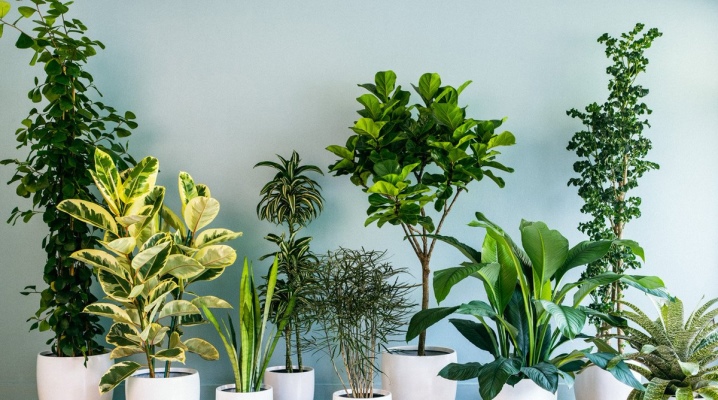
Indoor ornamental plants will decorate the interior of any room - be it a modern apartment, a wooden country house or even a minimalist design office. In addition, flowers of various colors will be an excellent addition to a home in any style. And the practical benefits of such "pets" are more than enough. The main thing is to clean the air in the room from dust and saturate it with oxygen. Today we will talk about what types of indoor plants exist and how to choose them correctly.

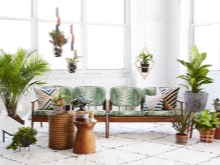

What are the decorative foliage plants?
One of the main types of indoor plants is decorative leaf flowers. So, among them, there are green, deciduous, with wide leaves, ground cover, with round leaves, arrowroot and other species. Let's consider the names and main characteristics of the most popular groups.

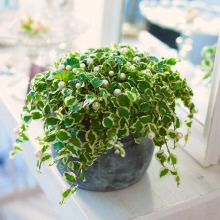
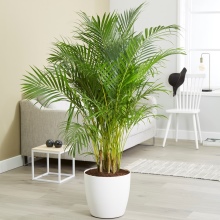
Ferns
The fern group includes a large number of plants that are suitable for home keeping and breeding.
- Pteris (or Pteris) in nature it is represented by 250 different species. Under natural conditions, the flower grows in areas of Tasmania, USA, New Zealand, and also Japan. If we talk about the appearance of the plant, then it is important to note the presence of elegant leaves, which may differ in size and shape from each other. Pteris can have 2 color options: one-color green or variegated. The plant itself is undemanding in relation to care measures. At the same time, there are several simple rules, without which you cannot grow a full-fledged healthy plant. For example, pteris should be placed in a room where the humidity level is high.

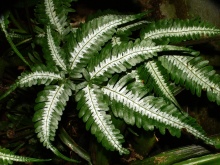
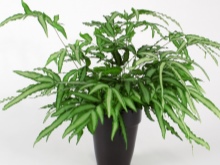
- Platizerium - This is a popular plant among flower growers, which, due to the shape of the leaves, is popularly called "flathorn" or "antler". Botanists distinguish several types of plants: spore-bearing and sterile. If we talk about the structure of the plant, it is important to pay attention to the fact that on the lower part you can find sterile fronds, which are colored green in autumn, and turn yellow and dry in summer and spring. However, even in this state, they cannot be removed from the flower, since fronds serve as a nutritional source for the plant. The flower begins to bring spores only in the 5th year of its life.
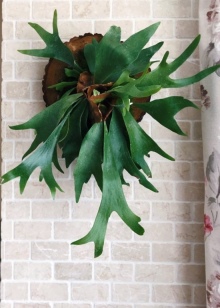
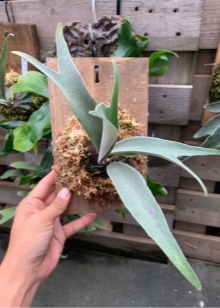

- Pellea - This is a plant that belongs to the group of Synopteris. In total, about 80 species of such a flower can be found in nature. Pellea prefers a temperate or tropical climate, therefore it actively grows in New Zealand. The flower is highly resistant to arid climates. Pellets, which are grown at home, can reach a height of 25 cm in height. The plant grows throughout the year.
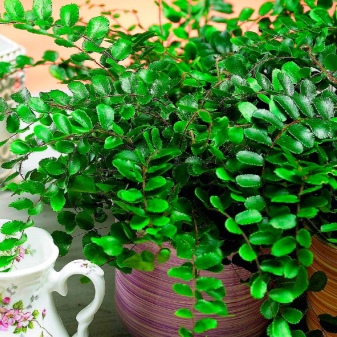

Palm trees
This is a group of plants that exists both naturally and can grow in a room. In order to grow a decorative palm tree at home, you need to adhere to a few simple rules. You need to take care that so that the soil in which you plant the plant is well-drained. Coarse gravel, shards, charcoal can be used as a drainage layer. The seeds themselves need to be watered frequently and abundantly. If these conditions are met, you can expect the first shoots to appear after 180 days (the more accurate time period depends on the specific plant species).It is also important to make sure that the plant receives a sufficient amount of light. Palm ornamental plants are divided into several types.
- Bamboo palm decorative indoor plants are very popular among flower growers, as they are presented in a wide variety of shapes and sizes. Therefore, many people are attracted to them because of their aesthetically pleasing appearance. A popular bamboo plant is dracaena, which is traditionally grown not in soil, but in water (due to the presence of a large amount of nutrients and minerals in it). However, the plant can also develop in the ground. It is important to ensure that water does not stagnate in the pot where the dracaena grows, which can cause the onset of decay processes.
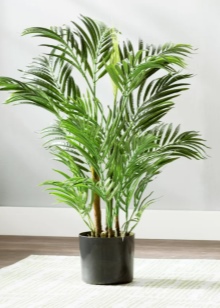
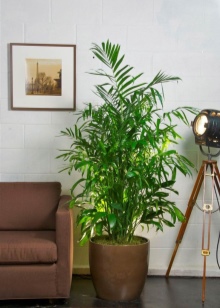
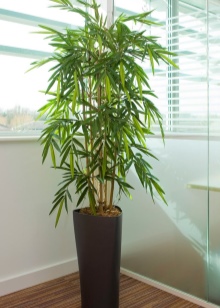
- Variegated palms have an unusual and bright color (which is why they got their name). These plants can be very different in appearance, they differ in both size and shape.
In order for the plant to actively grow and develop, it is imperative to carry out the spraying procedure.
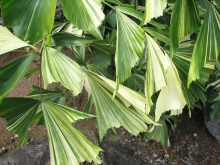
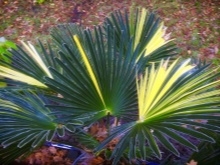

- Sago palms are considered one of the most original varieties of ornamental indoor plants. Despite the fact that their homeland is South Japan, today they are grown far beyond the borders of this country (Russia is no exception). Among the sago palms, the cicas, which has spreading leaves and a lignified trunk, is especially popular.
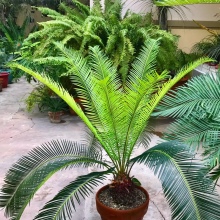
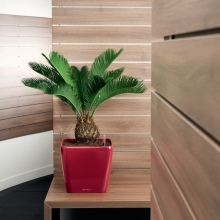
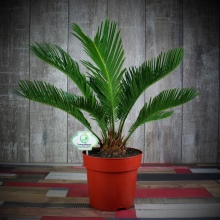
Ampelny
Among the ampelous indoor plants, such species as wax ivy and sickle asparagus can be distinguished. In addition, several other common plants can be distinguished.
- Akalifa Is an indoor flower that can be classified as a spurge. Initially, this flower naturally grew in Australia. The leaves of the flower are similar in appearance to the leaves of the familiar nettle. The popular name of akalifa is a fox tail. The inflorescences are colored crimson, golden and red. The plant is quite large in height and can reach 150 cm, the size of the leaves is 22 cm.
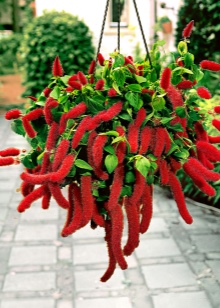
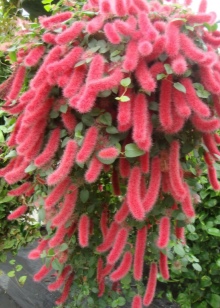
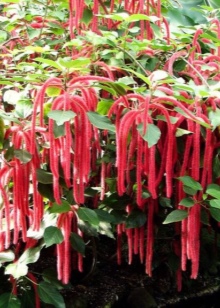
- Campanula. In horticultural circles, this plant is called "bride and groom". Campanula flowers have unusual shades of pastel palette: blue, white, lilac, etc. The flowers themselves resemble bells in shape.

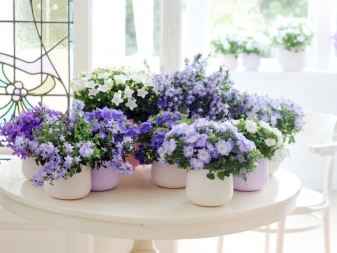
- Alsobia... This plant is perennial and belongs to the category of ground cover. The stems of the flower are colored red, and in their structure they are soft and pliable. Alsobia is a plant of the Gesneriev family; it naturally grows in South America. The flower is quite large in height and can reach 2 meters. Alsobia leaves are green and oval, with veins and villi on their surface. Inflorescences may have a red tint (some flowers have red spots).
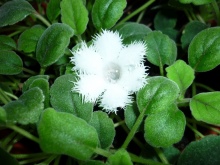
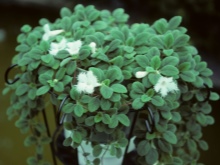

- Setcreasia purpurea. The plant itself is evergreen and perennial, its shoots reach 1 meter in length. The leaves are broadly lanceolate and reach 10 cm in length. Moreover, they have a rather unusual color with green and purple blotches.
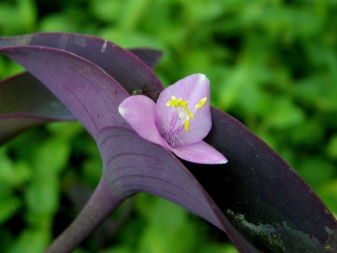
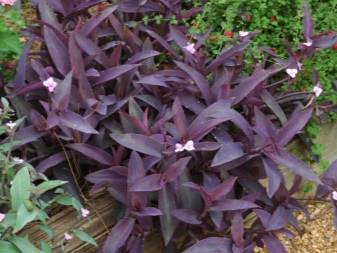
- Neoalsomitra sarcophillus - the flower of this plant is spherical, it reaches 15 cm in size. There are antennae of small length (up to 4 cm), which twist into a spiral. Due to their presence, the plant can attach to the support, since the antennae bifurcate at the ends and have special suction cups. The leaves are oval in shape and quite smooth to the touch. The color is heterogeneous, there are inclusions of cream and green.
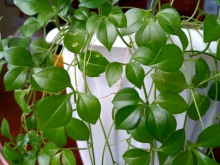
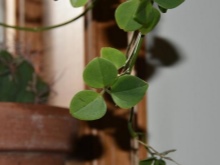
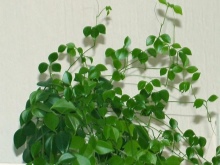
- Basella. In natural conditions, a similar flower can be found in the United States, India, New Guinea, Africa, etc. The people often call the plant "Malabar spinach".By its structure, the basella is a liana, it is very thermophilic. The leaves are spiky and can be up to 12 cm in size.
It is important to note the presence of a characteristic aroma.

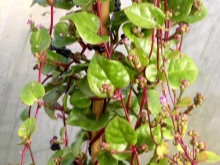
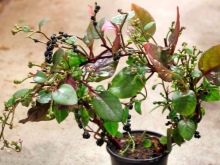
Decorative flowering species
Among all the varieties of home flowers, a group of decorative flowering plant species can be distinguished. They are all great for standard pots as they are quite small in size. One of the most common varieties among low-growing miniature decorative flowering flowers are violets... Let's take a closer look at the classification of plants.
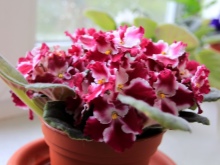
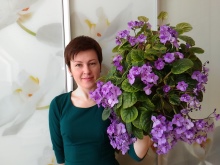
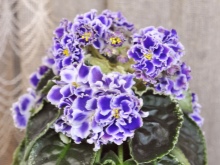
Sun-loving
Sun-loving and heat-loving indoor plants include:
- maidenhair;
- araucaria;
- asparagus;
- ginura;
- dizigoteka;
- croton;
- dieffenbachia;
- dracaena, etc.
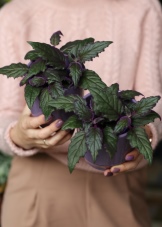
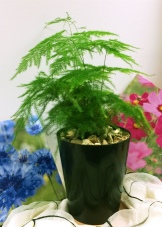
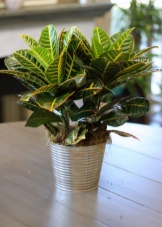
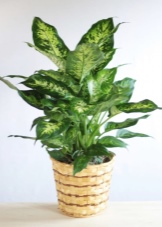
It is important to pay attention to the fact that some of them need bright light, while others can be adversely affected by the sun's rays. One way or another, but in the absence of enough light, such flowers will not grow and develop.
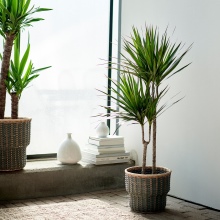
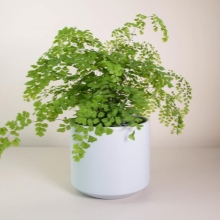

Shade tolerant
Shade-tolerant plants are flowers that will actively grow and develop even if you place them in a dark place. These flowers include:
- aspidistra;
- aucuba;
- aglaonema;
- sansevieria;
- scindapsus;
- ferns;
- zamioculcas;
- anthurium, etc.

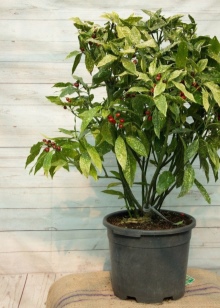
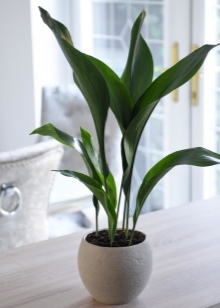
One way or another, but when choosing a plant, it is very it is important to focus on the conditions of your home... For example, if you live on the north side, then the flowers listed above will do just fine.
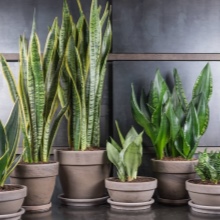
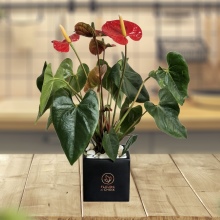
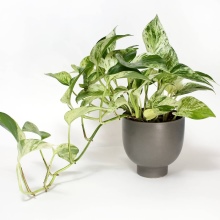
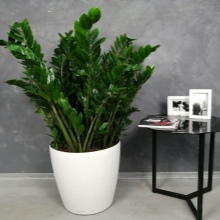
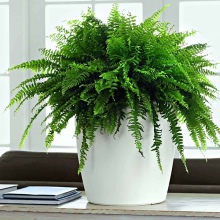
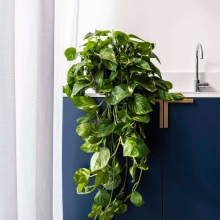
Other groups
In fact, there is a huge number of classifications of indoor flowers: there are aroid, carnivorous, tropical, non-flowering, treelike, thorny, fatty, small, dwarf, evergreen, succulent, medicinal, low plants for the house, as well as flowers with a trunk, epiphytes, predators and other families.
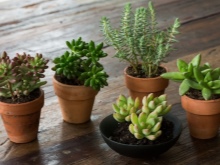
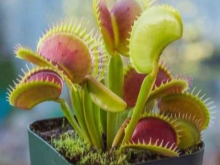
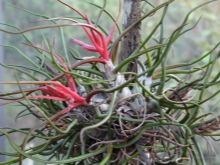
Bromeliads
Bromeliad flowers are cereal in nature. Tropical plants are distinguished by their aesthetically attractive appearance, therefore they attract the attention of a large number of professional flower growers, as well as beginners and amateurs. In total, there are 3,000 species of bromeliad flowers in nature.
- Ehmea (Aechmea) - it is a plant that brings together over 170 species of various species. In nature, ehmeya can be found in America (Central and South). The name of the flower itself came into Russian from the Greek language, it means "the tips of the peak." This name is due to the fact that the shape of the bracts of the plant is rather unusual. Ehmeya is a rather unusual plant, as it can be both terrestrial and epiphytic. The leaves are collected in a rosette and can have different colors: both monochromatic and variegated.
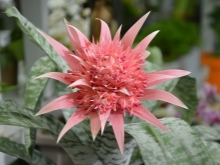
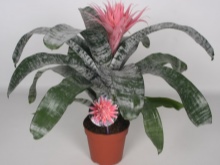
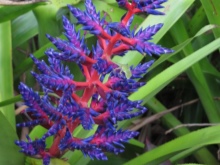
- Bromeliad is most widespread in Brazil... Also, the plant can be found in Argentina, Mexico, Bolivia and some other countries. The genus includes about 60 plant species, which are quite unpretentious and undemanding in terms of care measures. In essence, the plant is herbaceous and belongs to the category of perennials. The leaf plates are aesthetically pleasing, they have small thorns and a variegated color. At the top of the plant there is an inflorescence that can be red or yellow.
In its shape, this inflorescence can be racemose, capitate, spike-shaped or paniculate.
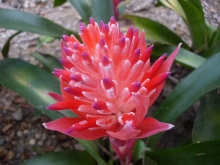

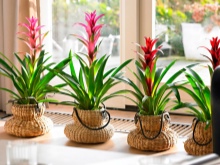
- Acanthostachys is a rather large plant. The name of the indoor flower comes from the Greek words "thorn" and "ear", so you can guess how the plant looks like. The homeland of acanthostachis is the forests of South America. From a botanical point of view, the flower is rosette. The leaves are rather narrow in size and shape, they have thorns.
In order for acantostachis to actively grow and develop, it must be located in a cool room.
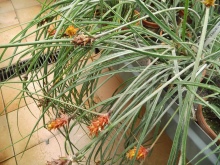
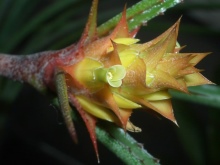
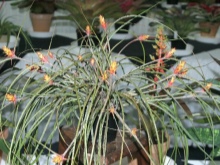
Orchids
Consider several types of indoor orchids.
- Cymbidium is an evergreen flower that grows in a subtropical climate. Among flower growers (both professionals and beginners), this plant is very popular, since it has a characteristic pleasant aroma. This flower blooms in winter for 4-6 weeks. In the process of growing cymbidium, it is important to ensure that the plant receives a sufficient amount of diffused, but at the same time, bright light. The flower is also quite attractive in appearance.
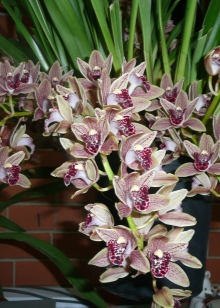


- Cattleya is a perennial herb containing about 40 types of flowers. At the same time, an orchid can grow on a variety of substrates (for example, on stones or even on other plants). In appearance, the Cattleya is very effective and attractive. At the same time, several flowers (up to 10) can bloom simultaneously on an adult and mature plant. The aroma of the flower is very unusual, it can resemble the smell of lily of the valley or lily.
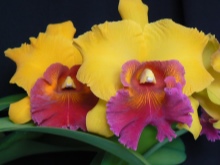
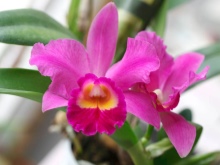
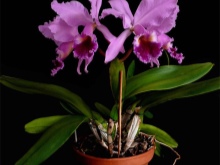
- Dendrobium Is the Greek name for an orchid, which means tree-dwelling. The orchid unites more than 1,000 different plant species that can be found in natural conditions in Australia, New Zealand, Japan, China and other countries. The flowering period can be up to 3 months. In this case, it is very important to pay attention to the temperature regime in which the orchid grows.
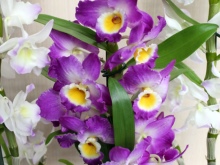

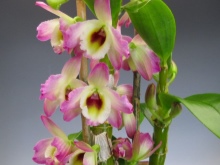
- Phalaenopsis can grow on trees and stones, so plants can be classified as epiphytes. This genus includes 70 different species. Orchid flowers are similar in appearance to butterflies, therefore they make a lasting impression. However, despite such an original appearance, it is quite simple to care for phalaenopsis; no complex care measures are required.

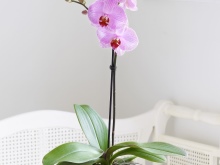
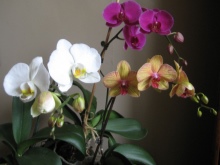
Succulents
Succulents are very popular among flower growers, since they do not require special care measures, but at the same time they have an original appearance that attracts attention. Succulents can be with or without thick and fleshy spines, euphorbia, herbaceous, spherical, etc. The most important characteristic of this group of plants is the fact that the plants contain a large amount of moisture, thanks to which succulents can grow even in adverse environmental conditions, in particular in an arid climate.
- Agave... This plant is a fairly popular succulent, which not only has an unusual appearance, but is also important from an economic point of view. In order to grow such a flower in your home, you need to take care of the availability of sufficient amount of light. In addition, the plant prefers watering in moderation, and the soil in which the agave grows should be neutral.
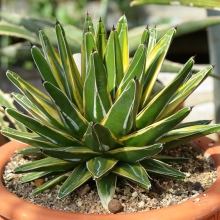
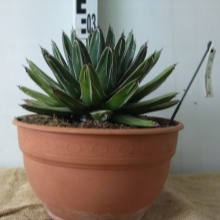
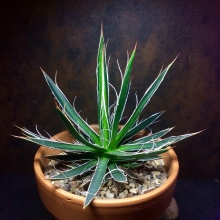
- Aloe. This flower belongs to the Asphodel family. The stem of the plant is rather small in length. It has a rosette consisting of leaves, which can have both jagged and smooth edges. Aloe is actively used for medicinal purposes, as it contains a large amount of nutritional and mineral components.
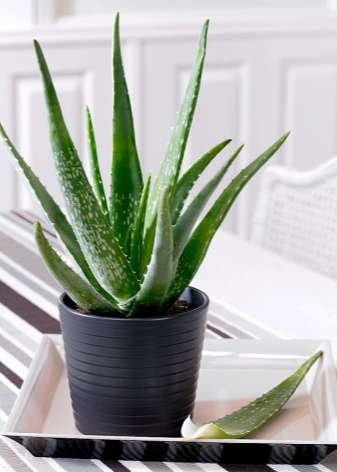
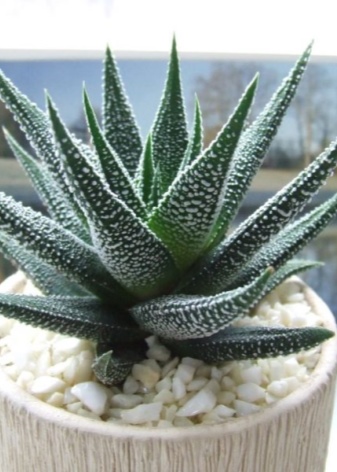
- Kalanchoe... Kalanchoe is a plant that is distinguished by the presence of unusual flowers arranged in the form of clusters on the arrows. The color of the flowers can be very different: pink coral, orange, etc. In order for the Kalanchoe to actively grow and develop, as well as in order to form a beautiful crown, the plant is cut and pinched.

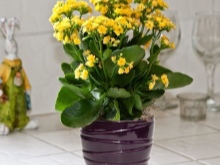
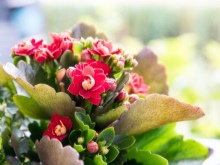
- Fat woman. The second name of the plant is Crassula. At home, you can grow a fairly limited number of varieties of jerky: lycopod, treelike, tetrahedral, point, oval and Schmidt. Regardless of the specific type of succulent plant, fertilization should not be forgotten.
Most often, nitrogen is used to enhance growth.
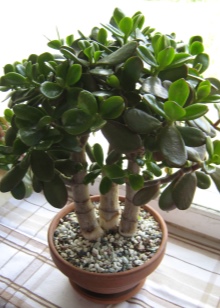
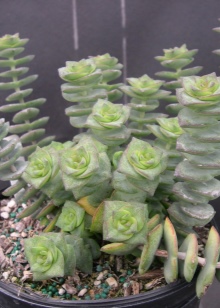

Fruit
If you want to combine business with pleasure, then you can grow at home not just beautiful, but also practical plants that will bear fruit.
- Laurel (Laurus) - This is a practical houseplant that will come in handy for every housewife. In natural conditions, it can be found in the Mediterranean region and the Canary Islands. Today, botanists have about 40 varieties of laurel. Generally speaking, this plant is evergreen. In the process of flowering, axillary umbellate inflorescences are formed on the laurel.
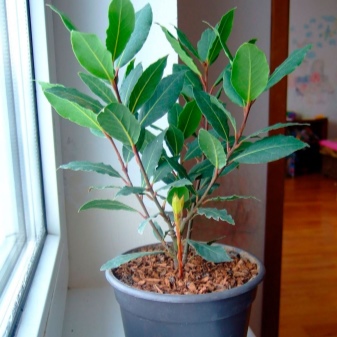
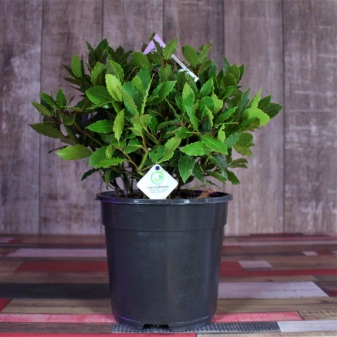
- A coffee tree. The homeland of this plant is Ethiopia. However, today the plant is grown far beyond the borders of this country. There are about 40 types of coffee tree in nature. When choosing a particular plant type, preference should be given to such types as Congolese, Tall, Liberian and Arabian. The leaves of the flower are rather fleshy in structure, they are painted in a pale green hue. The flowers are white.
The coffee tree that grows in your apartment will purify the air in the room, as well as give you energy and improve the functioning of your nervous system.
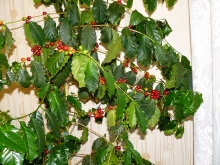
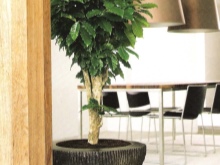
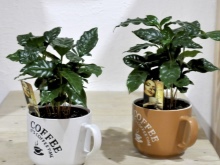
- Pomegranate (Punica) belongs to the Derbennikov family. This plant can be found in Western Asia and Southern Europe. In indoor conditions, only 1 type of pomegranate is bred, which gives fruits useful to humans.
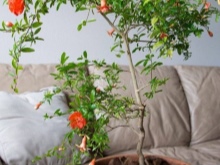
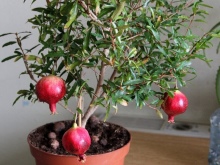
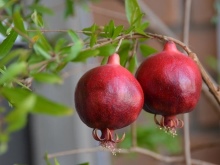
Choice of interior style
Depending on the design of the room, you should choose one or another decorative flowers, which can become accent elements in the room and decorate your interior:
- for style art deco it is recommended to choose plants such as monstera or orchid;
- for rooms decorated in African style, a cactus (or other succulents), bamboo and sansevieria will do;
- for country you need to choose fairly simple and common options: violet, Kalanchoe, hydrangea;
- for classic rooms a rose, dracaena or ficus is perfect;
- if you are decorating a room in style loft, then you should pay attention to the fat woman and zamiokulkas;
- for interior style pop Art Calamondin or Ehmeya will do;
- to decorate the room Scandinavian type, use succulents and prickly pears;
- for style provence hyacinth, lavender and azalea are great.
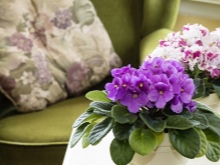


When choosing them, you should focus on your personal preferences, as well as on what kind of care measures the flowers need.
For an overview of orchid species, see the next video.































The comment was sent successfully.